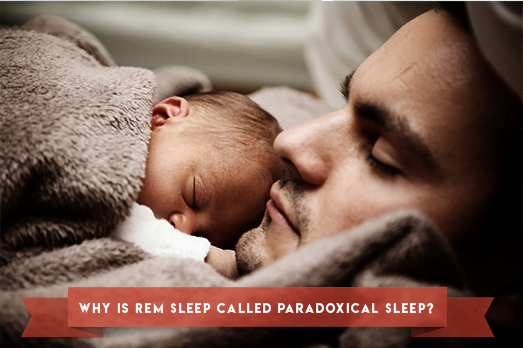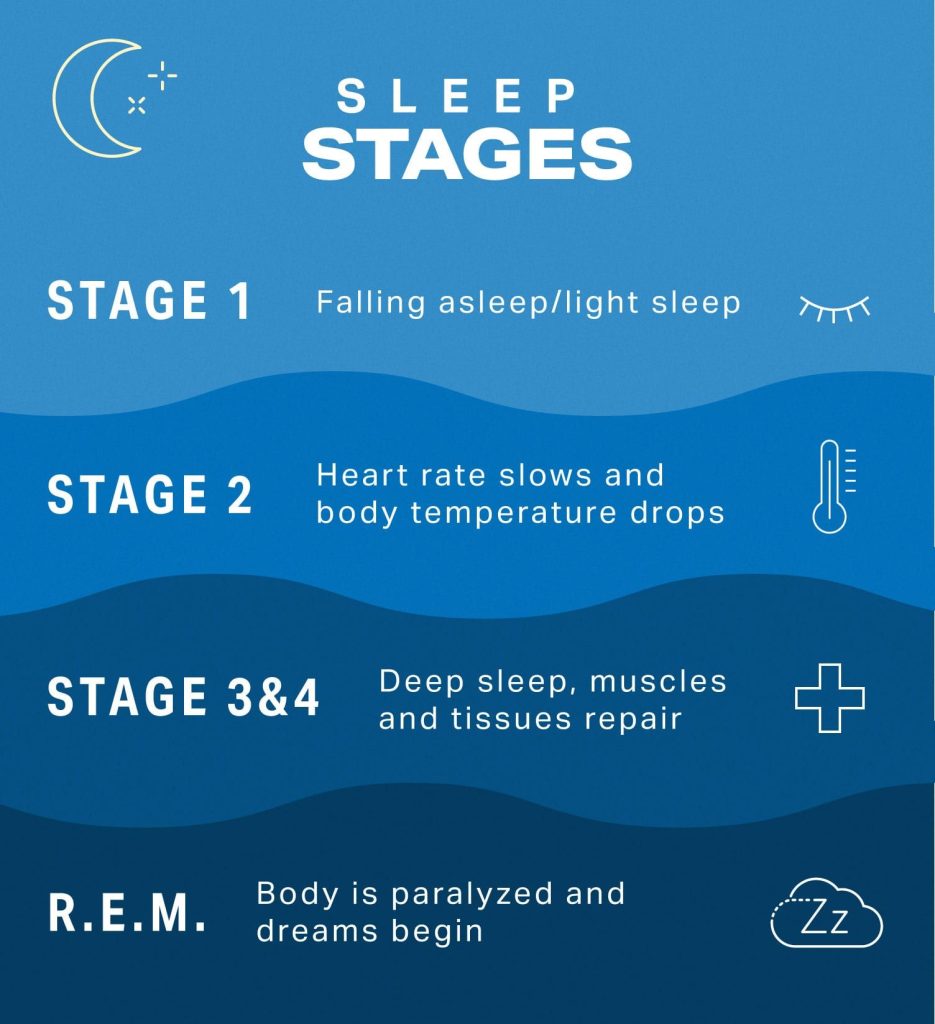We all understand the health benefits of a refreshing night’s sleep. A lot happens while we are asleep making sleep a vital part of general healthiness and wellbeing.
Why REM sleep is often called paradoxical sleep because in this sleep cycle, the sleeper is difficult to wake despite displaying the brain waves connected with waking. Hence the term paradoxical, as REM sleep presents several contradictory physiological signs.

What Is REM Sleep?
As you sleep, your body goes through several sleep cycles. While each sleep cycle provides important benefits for your body, REM sleep is especially critical as it increases brain activity, promotes learning, and creates dreams.
Typically, our brains cycle through five different sleep phases while we are asleep. These comprise stages 1, 2, 3, 4, and rapid eye movement or REM sleep.
REM sleep comprises on average 25 percent of an individual’s sleep cycle and usually kicks in around 70 to 90 minutes after you fall asleep. As your sleep cycle repeats during the night, you generally experience REM sleep several times each night.
REM sleep is believed to be an integral part of the process of storing memories, consolidating our learning, and balancing out our moods.
Why Is REM Sleep Called Paradoxical Sleep?
REM sleep is often called paradoxical sleep because sleepers in experiencing REM sleep are notoriously difficult to wake-up in spite. This is despite our brain waves displaying the type of activity indicative of a waking state.
Hence the term paradoxical as REM sleep brain wave activity contradict the signals we associate with deep sleep.
While to all intents and purposes, we appear to be asleep, both the brain and the body become more active as our heart rate increases, the flow of blood to the brain accelerates, our metabolism spikes and our blood pressure rises.
We seem to have a hazy awareness of our surroundings during REM sleep and people in REM sleep are much easier to wake than when in non-REM sleep.
How Long Is A REM Sleep Cycle?
Sleep is important for our overall health and wellbeing at every age in our lives, however, babies, young children and adults all sleep exhibit different REM sleep cycles.
The amount of REM sleep in our sleep cycle decreases in line with age. At birth, babies spend about half their sleeping time in a REM sleep and experience shorter sleep cycles than adults.
| Age Group | Total Hours of Sleep | Average Hours In REM Sleep |
| Newborns | 16 hours | 4 hours REM |
| Infants | 14 hours | 3.5 hours REM |
| Toddlers | 13 hours | 3.25 hours REM |
| Pre-Schoolers | 12 hours | 3 hours REM |
| School Children | 10 hours | 2.5 hours REM |
| Teens | 9 hours | 2.25 hours REM |
| Young Adults | 8 hours | 2 hours REM |
| Adults | 8 hours | 2 hours REM |
| Older Adults | 6 hours | 1.5 hours REM |
The amount of time we spend in REM and non-REM sleep varies with age. Babies appear to be biologically programmed to sleep more lightly and wake more often than adults.
Why Is REM Sleep Important?
REM sleep is what enables us to wake up feeling refreshed and revitalized after a good night sleep. REM sleep is important, as it is the restorative phase of our nightly sleep cycle.

Typically, we start our sleep cycle with non-REM sleep followed by a very short period of REM sleep. Non-REM sleep comprises three stages before the REM cycle begins anew. Each sleep stage can last from 5 to 15 minutes. A completed cycle of sleep consists of a progression from stages 1 through 3 before reaching REM sleep, whereupon the cycle begins again.
If your REM sleep is disturbed for any reason, your body is unable to follow its normal circadian sleep cycle. Instead, the sleep-deprived are plunged directly into REM sleep as a result of not getting an adequate amount of sleep the night before. You will be forced to cycle through extended periods of REM sleep until your body has “caught up” on this sleep stage. Disrupted sleep cycles can result in moodiness, inattentiveness, irritability and poor concentration spans.
Dreams In REM Sleep
Dreams occur during REM sleep. In a typical night, an average person dreams for approximately two hours, in increments distributed during each completed sleep cycle.

Researchers are unsure of the mechanics of how we dream or even why we dream. REM sleep usually starts after a period of deep sleep.
An area of our brain called the pons, which originates the REM sleep signals shuts down signals to the spinal cord. That causes the body to be immobile during periods of REM sleep.
If the pons doesn’t succeed in shutting down the spinal cord’s signals, people physically act out their dreams. This can result in a highly dangerous situation.
The pons also signals the cerebral cortex via our thalamus. The cerebral cortex is the area of the brain dedicated to processing information such as learning, thinking and organizing inputs. The areas of the brain REM sleep “turns on” appear to aid memory formation and learning.
What is Sleep Atonia?
REM atonia describes the phenomenon of sleep paralysis. The brain shuts down stimulation to your large muscle groups during the REM sleep phase, effectively immobilizing you and preventing you from acting out your dreams.
The natural process of REM atonia is thought to have evolved to prevent us from injuring ourselves placing ourselves in dangerous situations during our dream state.
However, this totally natural process can occasionally trigger Aware Sleep Paralysis, during which, you become conscious while your body remains immobilized. Sleep researchers believe conscious sleep paralysis is common and generally harmless.
NREM Versus REM Sleep
Non-REM sleep occurs when we are outside the REM sleep cycle. This phase of our normal sleep cycle sees us in a deep, restful sleep. This is the time when our bodies repair themselves, regenerating tissue, laying down bone and muscle mass and strengthens the immune system.
During this phase, our body movements, vascular tone, metabolic rate, respiration and blood pressure all decline by approximately 10 to 20 percent.
Conclusion
REM sleep is what enables us to wake up feeling refreshed and revitalized after a good night sleep. REM sleep is important for our continued health and well-being, as it is the restorative phase of our nightly sleep cycle. REM sleep is often called paradoxical sleep because while we are experiencing this sleep cycle, we are difficult to wake despite displaying the brain wave patterns associated with waking.





